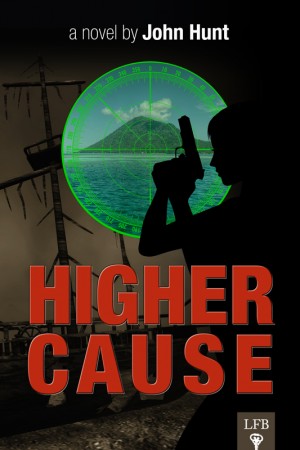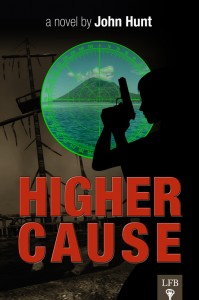This review is part of a series covering each installment of the serialized novel Higher Cause, written by John Hunt and published by Laissez Faire Books. To catch up, start with the announcement, the book’s link-rich table of contents, and the first review.

As we near the midway point of the 22 installments of Higher Cause, we get the first major action set piece. The long-awaited OTEC arrives at The Island, and once again a deadly sabotage is attempted. By the end of the second of two chapters, it is clear that there is more soon to come. We are left with perhaps the biggest cliffhanger yet.
This was an excellent time to pull a scene like this. A lot of different pieces have been put into place and the main storyline is underway. It raises the stakes and gives us a long chapter from multiple viewpoints. If it were a movie, this section would probably feature in the trailer. The key, of course, will be to get a couple more such chapters in and increase the thrills and tension each time.
The pacing was spot on this week. We can feel a lit fuse burning to its end; a sense of foreboding laces the early segments. The picture of what is going to happen comes into sharper and sharper focus, and then the thrills start. It is a strong addition to the story so far.
There continue to be opportunities for improvement. One would be to do a little less explaining. There are times when a line of dialogue is explained when the thrust is obvious from the context and the wording. Other times a character’s actions or reactions are explained when it is not necessary; the reader understands what is going on and why.
There are opportunities to cut sentences, some of them of the oddly worded variety. Take the following paragraph:
It takes thirty minutes for the receptors of light in the human retina to fully acclimate to low light conditions. As Petur stood there, his retinas continued in their efforts. Ever so gradually, he could make out more and more shapes.
The second sentence is awkward, describing a process that produces no visible manifestation in a scene. Retinas, mitochondria, and other miniscule body parts can be assumed to be doing their job without reminder. Even the first sentence might be cut, because we all understand the process of growing accustomed to the dark, even if we might not be able to cite the 30-minute figure.
A thorough editing of the paragraph might leave us with something like “As Petur stood in the dark, his vision acquired greater sensitivity and he began to see the details of his surroundings.” Done often enough, this scrubbing of the manuscript would aid its momentum.
Finally, there are times when things are told when they could be shown. Consider the following:
Above, Jeff began to recover from the disabling blow he had received a moment earlier.
What exactly does this recovery entail? Rather than be told that Jeff recovered, we would be more engrossed in a section that made the recovery feel real to us. We need an appeal to the senses. Did his head throb? Did his ears ring? Did he taste blood in his mouth? Was he dizzy? What symptoms receded as he recovered, and how did that affect his actions? With the use of vivid language and imagery, a bit of show here would bring the narrative to life. Here I argue for adding sentences, rather than subtracting them.
As noted before, we end on a cliffhanger, and a good one. I can imagine some desperate scenario awaiting us next week. We shall have to wait to see what happens.















